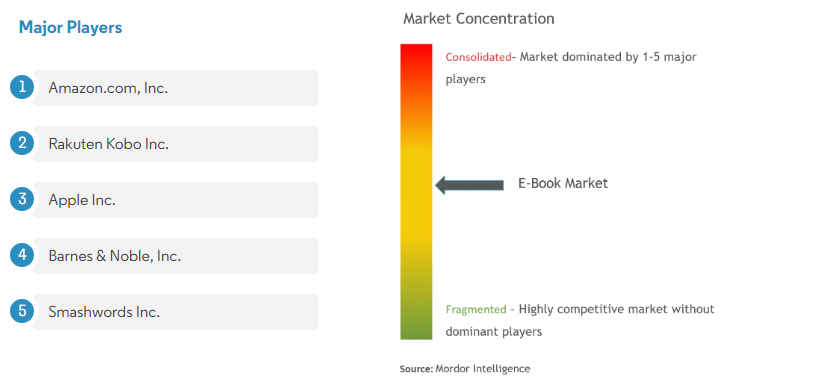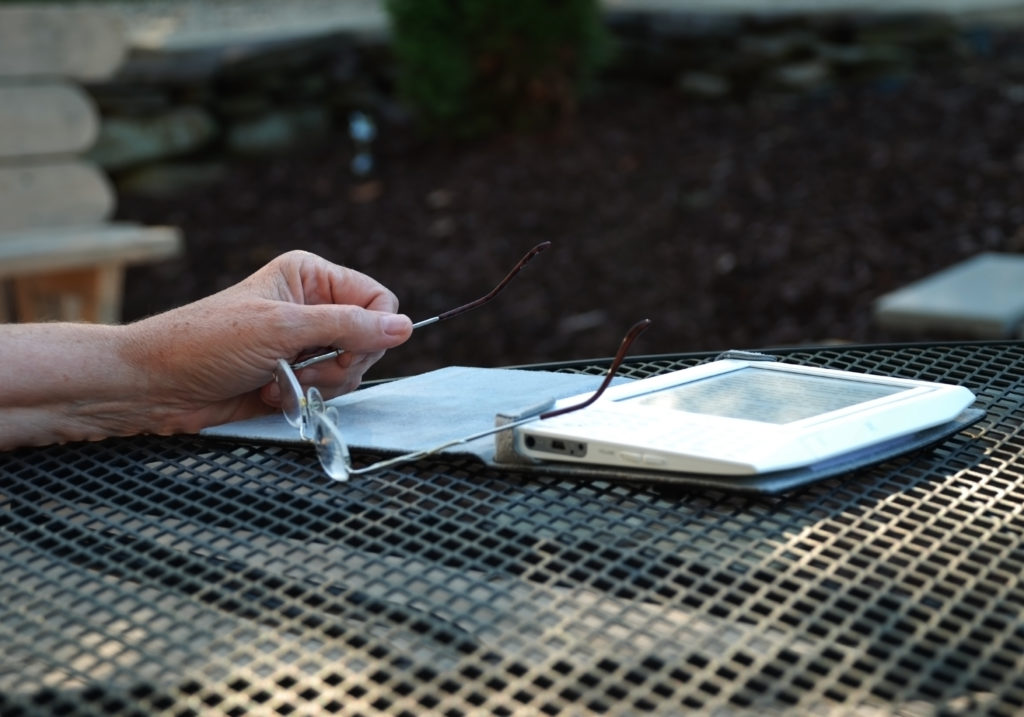So, you want to self-publish through Amazon’s Kindle Direct Publishing? Well before you take that dive, it is extremely important that you first understand what Kindle Direct Publishing is actually about.
Known simply as KDP, Kindle Direct Publishing was established in 2007 as Amazon’s publishing platform together with the release of Amazon’s eBook reader, Kindle. Since its beginnings, it has changed the lives of a lot of authors, allowing them, especially the independent ones, to have an avenue for their work to be noticed and known without going through the difficulties often associated with traditional publishing. It has been a breakthrough for the likes of E.L. James, author of 50 Shades of Grey, to achieve prestige, and even for other writers who are able to score jobs through the platform. Currently, it is the leading self-publishing platform, dominating the eBook market at 80%. Nonetheless, how does Kindle Direct Publishing work?

by Mordor Intelligence
Mainly, how KDP functions is that you upload and publish your work through the KDP platform then readers will purchase it as an eBook or, if available, as a paperback which is printed on-demand also through KDP. The author then is paid royalties with each copy of his/her book sold through KDP.
Still, KDP is still not all simple and it will be irresponsible to outright enter into its arena without being knowledgeable of not just the pros, but also the cons of KDP.

Pros and Cons of KDP
| Pros | Cons |
| Amazon is one of the biggest commerce companies in the world. To be published then in its platform guarantees a wide distribution opportunity. | Once you decide on KDP, you will be tied to an exclusivity clause. This means that you cannot sell or share your work to any other platform. |
| Amazon KDP offers 70% royalties to authors for every book they sell. This royalty rate is higher than a lot of publishing avenues, especially traditional press. | Even if the set royalties in KDP is higher than most, in reality, it also has a limit as the 70% royalty is only applicable to those who sell their books in Kindle for $2.99 to $9.99. Once you go beyond that price, even if your price is just at $10, your royalty will dramatically decrease. |
| Compared to taking the traditional publishing route, authors who self-publish through KDP are able to claim full rights to their work. | If ever you decide to leave Amazon, whatever review you garner with your works, they will all be gone. This means that whatever praise or trust you are able to generate from the readers of your book, that will be a thing of the past. |
| Publishing time is also shortened with KDP. As soon as you follow the required format by the platform, you are already set to publish your work. | Amazon KDP is strict with the formatting and publishing rules. Because of this, you will have to follow carefully each and every requirement so your work will be published through the platform. If Amazon sees that you miss out on what is expected from you as an author on the platform, they will readily remove your book. |
| Since KDP is more for ebooks and print-on-demand service, there is no need for authors to keep inventories for their books which significantly lessens the expenses. | The ease to self-publish in Amazon KDP also assures one thing – competition. You will really have to step your game up for people to notice your book with all the multitude of other books available to them. |
| KDP has an array of ways by which authors can be paid the royalties they gain from the books they are able to sell. | The royalties earned by authors through Amazon KDP are not readily made available for receipt as there is a 60-day window between the earning and receiving dates. |
| The algorithm of Amazon in recommending books to buyers does not give priority based on fame of the authors. Due to this, even indie authors have an equal chance to be noticed, bought, and read. | Reviews are critical for your book to have more traffic, as especially dictated by the Amazon algorithm. Nonetheless, with Amazon, reviews are only available for those who have paid for your books. So, if no one buys your book, then no one will leave a review then you will not be noticed greatly by the algorithm which of course, will not benefit you as an author. |
| KDP allows authors to have a way to sell both ebooks and print books through just one account. | Compared to traditional publishing, with Amazon KDP, you will still have to do a lot of things on your own, including paying for your book designs and marketing your work. |
| Kindle’s tie up with Audible, an Audiobook platform, also presents a possibility for one’s book to also be sold in audio version. | Due to the fact that you’re selling your book through Amazon, you cannot directly market your book either to buyers of it or to those related to them even if you want to. This is a missed opportunity when it comes to marketing your book. |
| You will have access to KDP Unlimited and KDP promo deals. | Amazon is one of the biggest companies in the world, and its owner, one of the richest man. With your use of Amazon, you are contributing on the monopolization of the market by the company. |
If after weighing the pros and cons of KDP, you do still want to pursue it, it is critical that you carefully follow KDP’s requirements for formatting and publishing for again, KDP is very strict with them. But, there is no need to worry as here is a guide you can follow.

Formatting Guide
The first step in creating your book for the purposes of self-publishing through KDP is to employ Microsoft word, a tool which people are generally knowledgeable of. There, you should type the contents of your book, but in awareness of the limitations of KDP. In Kindle, styles that are common in Microsoft word including bullets, text boxes, tables, headers and footers will not be recognized and therefore, you should not utilize them. Additionally, you should not include your book’s cover image in the Microsoft word file. The cover image should be created separately in accordance to the sizing requirements of KDP and should be saved as TIFF or JPEG. You should also be mindful that the structure of your book should be fitting for KDP. A recommended layout is:
- Title page
- Copyright Page
- Table of Contents
- Book content
- Back information
Each part of this structure also has corresponding necessities that have to be followed. (Colin Dunbar presents a full step-by-step guide that you can look at.)

Publishing Guide
Once you are sure that every part of your book that you created in Microsoft word has been in line with the KDP requirements, you can now convert your file to KPF using Kindle Create. Granted, KDP also accepts your work as a Word/Epub file, but KPF is the best way to go. After which, you can now set forth to upload your work to KDP. To do that, you should first and foremost, have a KDP account which you can create either with your email or your Amazon account if you have one. Fill up the important details for your profile especially your tax information as it is needed before you are able to publish your book. Once your profile is updated and finished, you can proceed with starting to upload your book through the KDP dashboard. Just click either “+ Kindle Ebook” or “+ Paperback” and you can went with the process, putting on the details of your book such as the book title, cover page, description, Amazon keywords, Amazon categories and then uploading your book, your book cover, and also setting the rights and prices. When all is good, you can now Save and Publish. (To know more about the publishing steps, Scott Allan of Self-Publishing School provides a more detailed guide!)
There you have it! Ready to be published now? Take that leap here: https://kdp.amazon.com
